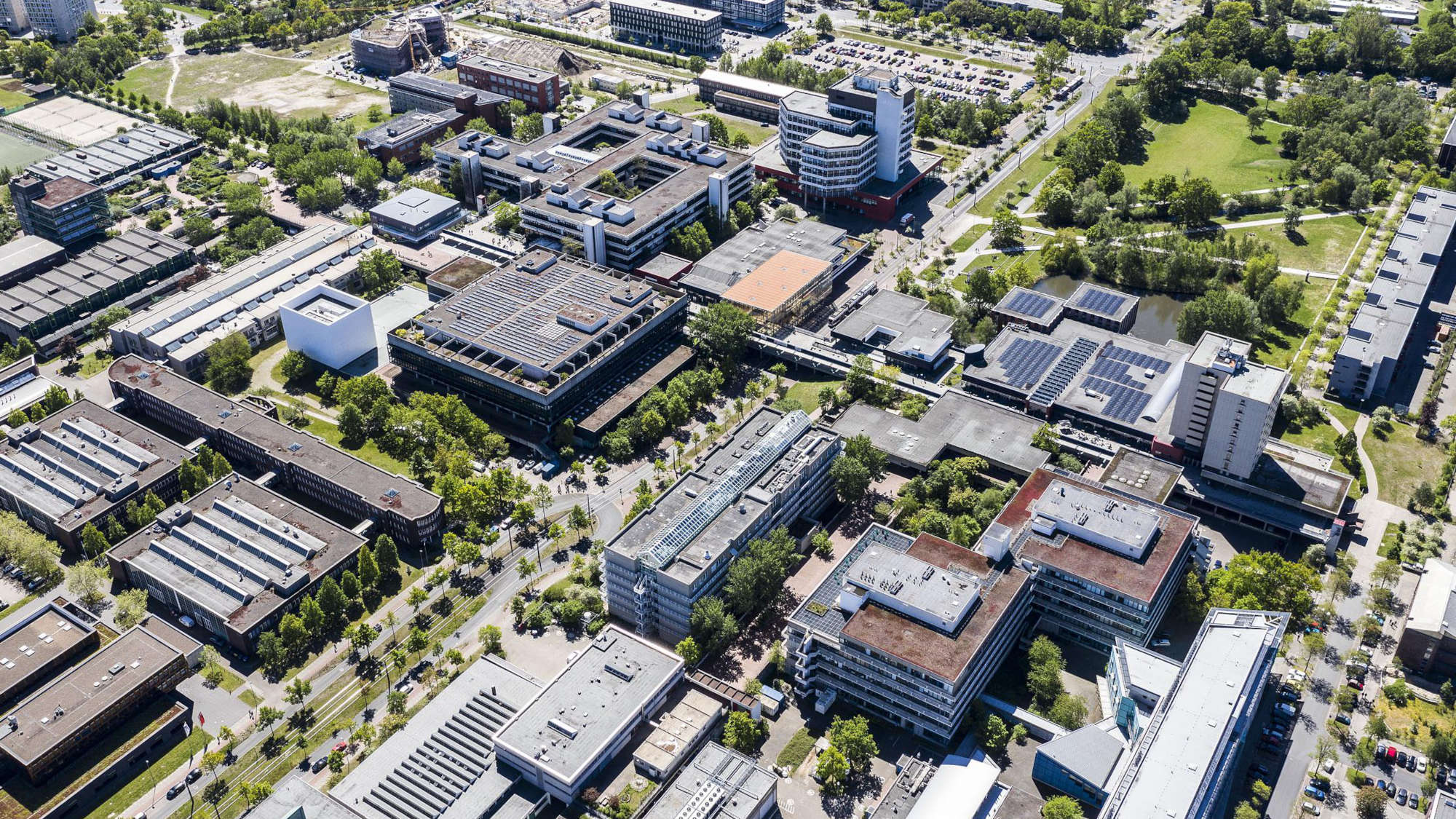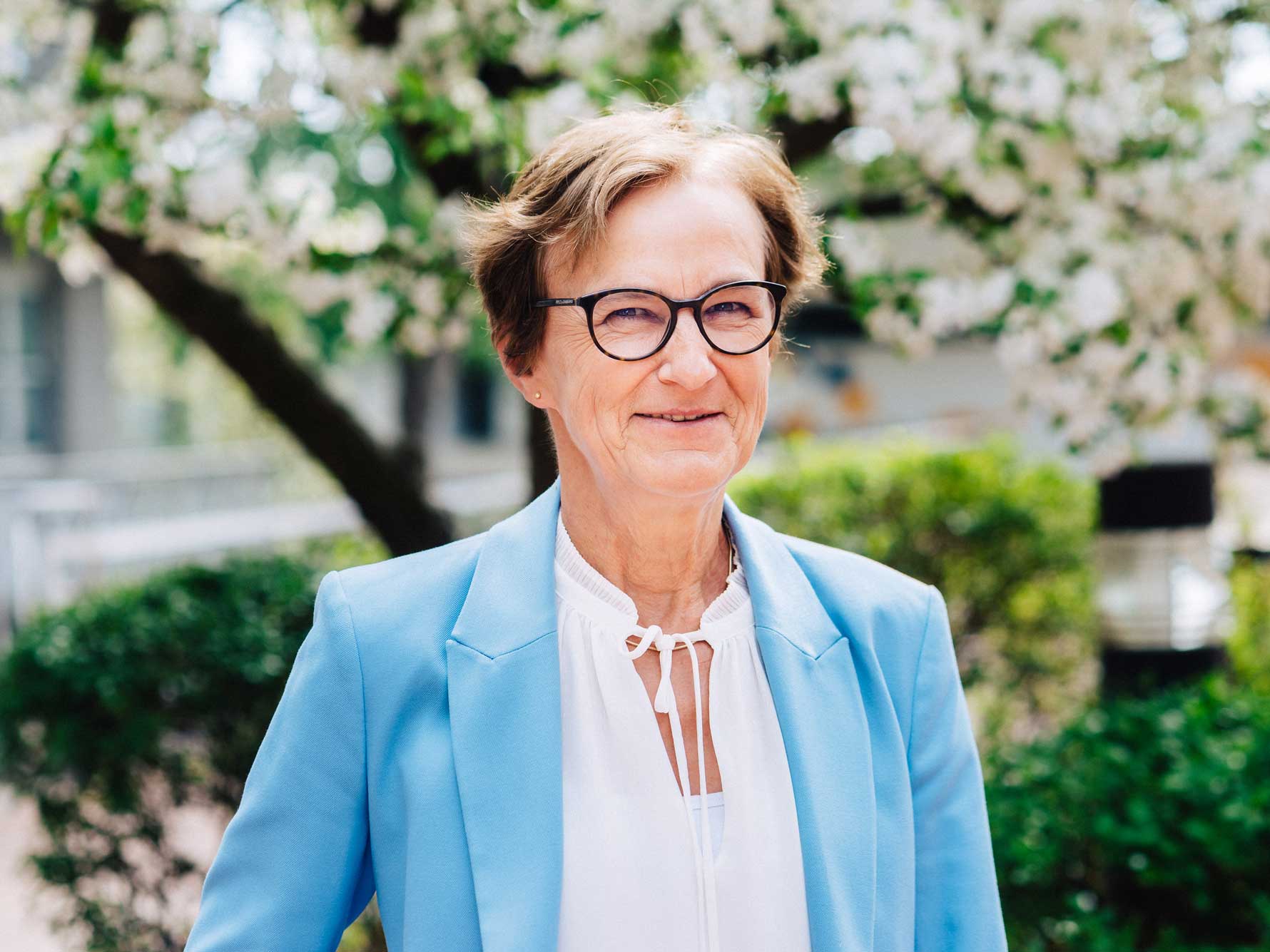
© Dietmar Schmoll / Universität Bremen
Everyday Sustainability
Behind the scenes on how the University of Bremen cuts emissions
The University of Bremen uses exclusively renewable energy for electricity and heat and produces zero CO2 emissions. However, Dr. Doris Sövegjarto-Wigbers, Climate and Environment Manager, believes that protecting the environment requires further improvements in everyday operations.
There are almost 20,000 students at the University of Bremen, in addition to 3,500 employees. Every day, they consume natural resources, and generate waste and emissions. This takes place in an area of 520,297 square meters on which 70 buildings stand, which contain mostly office space, but also energy-intensive labs and storage rooms. The electricity consumption alone adds up to around 40,000 megawatt hours per year, which is roughly equivalent to that of a small town with 10,000 inhabitants.
This figure comes from the annual Environmental Statement for 2023, which lists data for energy and water consumption as well as the amount of waste generated. The goal is to decrease these amounts each year. “At the center of the University of Bremen’s sustainability and environmental activities are efforts to reduce the use of natural resources and to avoid operationally harmful effects on the environment and health,” the environmental guideline states. In the words of the Climate and Environment Manager, Dr. Doris Sövegjarto-Wigbers, “We are committed to sustainability and are addressing this in every instance possible.”

© Jonas Ginter / WFB
The Environmental Statement also provides information about the implementation of these goals, and the details are verified and certified by external experts. The university obtains its electricity exclusively from renewable sources, and has more solar panels on the roofs of its buildings than any other German university. The nearby waste-to-energy plant provides heat and the university was able to reduce the recent water usage by implementing water-saving methods in the sanitary facilities, among other methods. Similar reductions were made to the amount of residual waste, paper, and other waste products, although the COVID pandemic played a role in that.
“We are committed to sustainability and are addressing this in every instance possible.”
Accompanied by the biology faculty, there has also been an increased focus on biodiversity on campus. Nesting boxes and insect hotels were made and distributed, and lawn mowing was reduced in certain areas to create biotopes. The university placed ninth in the “Green Metric World University Ranking” in 2022, which is an international university ranking on sustainability. “We were nominated for the German sustainability award and even though we didn’t get it, we also have a good standing nationally,” Sövegjarto-Wigbers explains.
So far, so good. But good things can be made even better. “I am not quite content with our energy consumption in particular,” Sövegjarto-Wigbers, who will retire this year, states. Her main focus here is on the heating system. Many of the buildings are around 50 years old, and a great deal of energy is expended just to maintain their functionality. She would like to completely turn off the heating circuits in the summer and implement hydraulic balancing.
What other changes would she like to see? The construction of a wind power plant near campus that could supply the university with electricity. But above all: “A car-free campus! Mobility is our main source of emissions.”